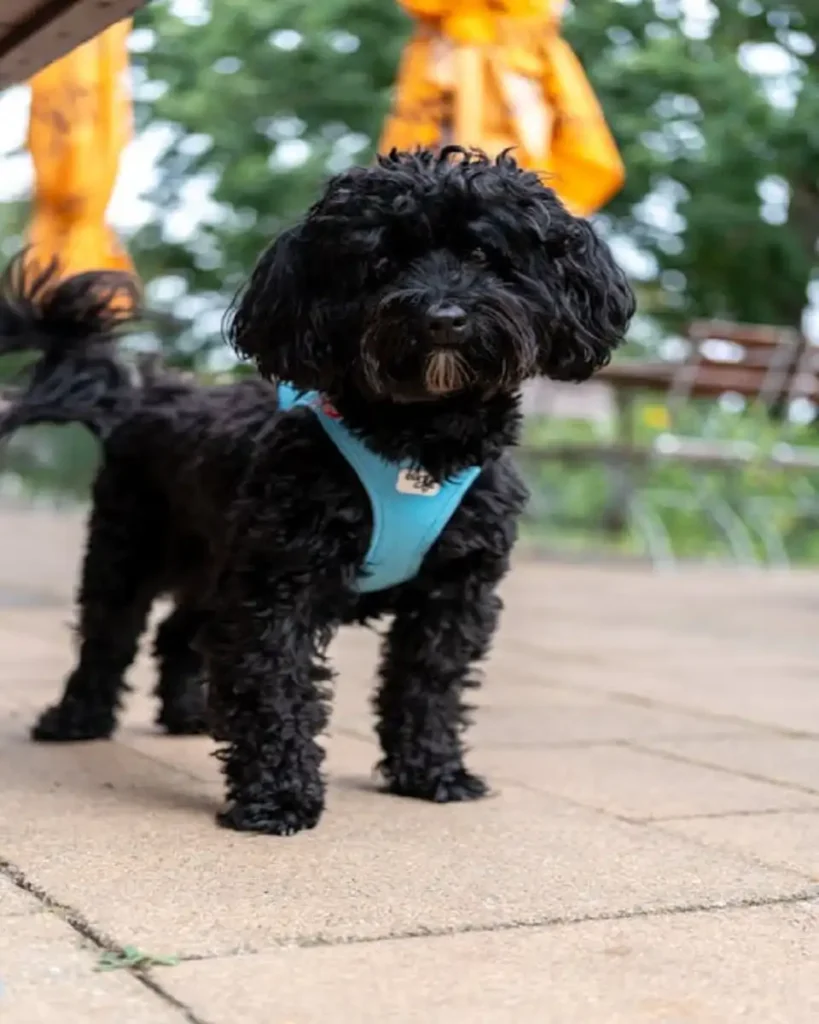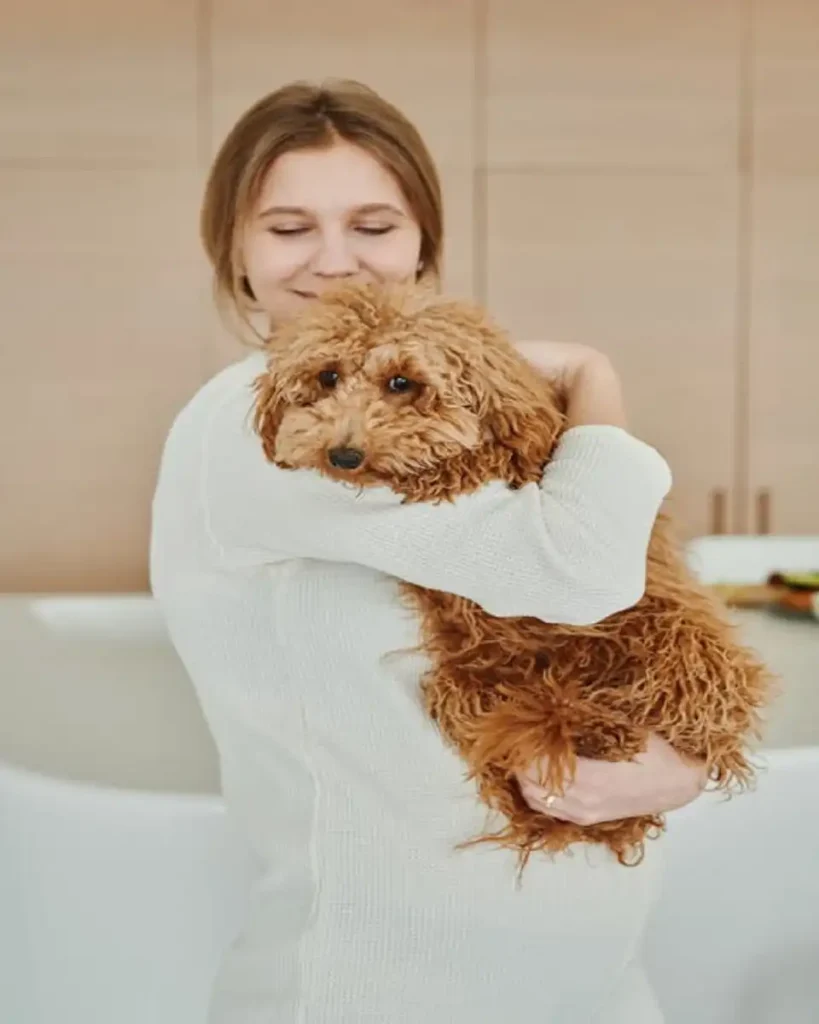Bringing a Labradoodle into your life is a wonderful experience filled with joy, companionship, and lots of fun. Labradoodles, a mix of Labrador Retrievers and Standard Poodles, are known for their intelligence, friendly nature, and hypoallergenic qualities. In 2025, caring for and training a Labradoodle will keep evolving with new expert tips that ensure your furry friend leads a healthy, happy life. The Talent Dogs expert provides 15 essential care and training tips to give your Labradoodle the best start and lifelong support.

Introduction
Labradoodles are beloved family dogs due to their sociable personalities and adaptable nature. However, they do require attention to their grooming, health, exercise, and training needs to thrive. From daily brushing to effective training methods, expert-approved advice for 2025 emphasizes a balanced approach blending love, consistency, and patience. Whether you are welcoming a Labradoodle puppy or working with an adult dog, these tips will support your journey to build a strong bond and well-mannered companion.

1. Grooming Your Labradoodle Regularly
A Labradoodle’s coat can vary from curly to wavy, requiring regular grooming to prevent mats and tangles. Experts recommend brushing your Labradoodle daily if they have a curly coat, or at least 2-3 times per week for wavier coats. Use a slicker brush and a wide-tooth comb to gently detangle sensitive areas such as behind the ears and under the legs. Regular professional grooming every 6 to 8 weeks helps keep the coat healthy and manageable. Avoid over-bathing, as Labradoodles’ coats naturally repel dirt and frequent washing can strip essential oils.

2. Bathing and Skin Care
Bath your Labradoodle every 4-6 weeks or when visibly dirty. Choose a gentle, tearless shampoo formulated for dogs to protect their skin’s pH balance. Thorough rinsing is crucial to avoid irritation. After bathing, towel dry and use a blow dryer on a cool setting to completely dry the coat, preventing skin infections. Regular ear cleaning with a vet-approved solution helps prevent infections common in floppy-eared Labradoodles.
3. Dental Hygiene
Dental care starts early and involves brushing your Labradoodle’s teeth several times a week using dog-safe toothpaste. Providing dental chew toys supports oral health by reducing plaque buildup naturally. Healthy teeth and gums prevent future pain and costly vet visits.
4. Balanced Nutrition for Optimal Health

Feed your Labradoodle high-quality dog food rich in animal proteins, whole grains, and vegetables from organic sources. Avoid foods with unidentified fats or fillers. Their energetic nature demands a balanced diet to maintain health, support growth, and sustain activity levels. Consult your vet for tailor-made dietary plans, especially for growing puppies or older Labradoodles.
5. Daily Exercise and Physical Activity
Labradoodles have moderate to high energy needs. Daily exercise of 30 to 45 minutes is essential to keep them fit and mentally stimulated. Activities include walks, fetch, running in a safe yard, or swimming. Avoid rigorous exercise like jogging during the first year to protect joint development. Regular activity reduces behavioral problems caused by boredom.
6. Early Socialization Is Key

Expose your Labradoodle to different people, dogs, and environments at an early age. Socialization helps them develop confidence and reduces fear or aggression in new situations. Puppy classes and regular interaction with friendly dogs and people are excellent ways to socialize your Labradoodle.
7. Consistent Training Practices
Consistency is the foundation of successful Labradoodle training. Use the same commands, tone of voice, and routine daily. A predictable schedule for feeding, walking, and training helps establish good behavior and prevents confusion. This consistency builds trust and understanding between you and your dog.
8. Positive Reinforcement Techniques

Reward desired behaviors with treats, praise, or playtime to encourage your Labradoodle. Positive reinforcement creates a happy learning atmosphere and strengthens your bond. Avoid punishment-based training, which can cause fear and anxiety, hindering progress.
9. Short and Frequent Training Sessions
Labradoodles learn best in short, focused sessions lasting 10 to 15 minutes multiple times daily. This avoids frustration and keeps your dog’s attention. Always end on a positive note to motivate your Labradoodle for the next session.
10. Crate Training for Security

Crate training gives your Labradoodle a safe space to relax and reduces anxiety during absences. Introduce the crate slowly with bedding and toys. Reward your dog for entering the crate to create positive associations. This also aids in housebreaking and managing behavior when unsupervised.
11. Managing Stubborn Behavior
While Labradoodles are intelligent, some can be stubborn. Clear communication, patience, and using effective motivators like favorite treats or toys help overcome this challenge. Recognize what motivates your dog best and tailor your approach accordingly.
12. Monitor Health for Common Issues

Be aware of Labradoodle health concerns such as progressive retinal atrophy, cataracts, and glaucoma, which affect their vision. Regular eye check-ups and prompt vet visits at signs of redness, cloudiness, or behavior changes protect your dog’s eyesight. Genetic screening by responsible breeders helps reduce inherited health risks.
13. Handling the Labradoodle Coat in Different Seasons
Seasonal differences affect grooming needs. In winter, keep your Labradoodle’s coat dry and free from mats caused by moisture. During summer, adjust walks to cooler times like early morning or late evening to prevent overheating. Regular grooming also helps with coat ventilation.
14. Avoid Common Owner Mistakes

Avoid overfeeding, inconsistent training, neglecting socialization, and ignoring grooming needs. These common mistakes can lead to obesity, behavior problems, fearfulness, and coat issues. Stay informed and proactive to ensure your Labradoodle’s wellbeing.
15. Consider Professional Help
If unsure about any training or health issue, consulting a professional dog trainer or veterinarian is wise. Personalized advice and intervention can resolve problems efficiently and enhance your dog’s quality of life.
Labradoodle Care & Training Quick Guide
| Aspect | Tips & Notes | Frequency/Timing |
| Grooming | Brush daily (curly) or 2-3 times weekly (wavy) | Weekly brushing, groom every 6-8 weeks |
| Bathing | Use dog-friendly shampoo, avoid over-bathing | Every 4-6 weeks or as needed |
| Ear Care | Clean with vet solution, check weekly | Weekly |
| Dental Care | Brush teeth using dog toothpaste | Several times per week |
| Nutrition | High-quality protein-rich diet | Daily |
| Exercise | 30-45 minutes of walking and play | Daily |
| Socialization | Introduce new people, dogs, experiences | Early and ongoing |
| Training | Consistency, positive reinforcement, short sessions | Daily training, 10-15 minutes per session |
| Crate Training | Gradual introduction, positive association | Start from puppyhood |
| Health Monitoring | Vet check-ups, watch for eye and joint issues | Regular vet visits |
| Season Care | Adjust grooming and exercise accordingly | Seasonal |
| Professional Help | Seek trainer or vet advice when needed | As required |
Australian Labradoodle for Sale

If looking to bring an Australian Labradoodle into your family in 2025, many reputable breeders across the USA offer litters of mini, medium, and standard-sized puppies. Australian Labradoodles are especially sought after for their allergy-friendly, low-shedding coats and gentle temperaments. Breeders like Heartland Labradoodles in Iowa and GorgeousDoodles in Colorado provide puppies raised with high standards in health, socialization, and training. When searching for an Australian Labradoodle for sale, it is essential to choose breeders who conduct genetic health testing and raise puppies in loving environments to ensure a happy, healthy dog.
Labradoodle Personality

Labradoodles are recognized for their friendly, intelligent, and outgoing personalities. They are highly social dogs who thrive on interaction with family members and other pets. Known for being affectionate and loyal, Labradoodles form strong bonds and enjoy being included in daily activities, from active play to quiet cuddles. Their intelligence makes them easily trainable, yet they require consistent mental and physical stimulation to avoid boredom. They tend to be gentle with children and adaptable to various living situations, though they may struggle with separation anxiety if left alone too long. Labradoodles are generally calm indoors but lively and playful outside, making them excellent companions for active families.
Miniature Labradoodle in USA

The miniature Labradoodle, typically weighing between 20 to 25 pounds, has gained popularity as a smaller-sized alternative that fits well in apartments and smaller homes across the USA. These mini Labradoodles maintain the breed’s trademark friendly temperament and hypoallergenic coat but are more manageable in size. Many breeders specializing in mini Labradoodles, such as ones in Portland and the Pacific Northwest, offer well-socialized, hand-raised puppies ready to join loving families. Mini Labradoodles often mature to be around 14 to 18 inches tall with coats available in various colors, including apricot, chocolate, and black.
Australian Labradoodle in USA

Australian Labradoodles have become one of the most sought-after breeds in the USA due to their superior temperament, health standards, and non-shedding coats. Breeders focus on multi-generational lines to maintain consistent traits such as intelligence, friendliness, and allergy-friendly fur. These dogs adapt well to a variety of home settings and often excel in therapy and service roles thanks to their gentle disposition and trainability. States like Iowa, Colorado, and Oregon host reputable Australian Labradoodle breeders who follow strict health and socialization protocols, offering litters throughout the year for families across the country.
Why Are Labradoodles Bad?

While Labradoodles are generally praised, they may not be the best fit for everyone and have some potential downsides. Their high energy requires daily exercise and stimulation; without it, they can become bored and destructive. Some Labradoodles exhibit separation anxiety if left alone too long, which may lead to excessive barking or chewing. Additionally, their intelligence sometimes comes with stubbornness, necessitating patient and consistent training. From a grooming standpoint, their coats require regular maintenance to avoid mats. Finally, Labradoodles may be costly to purchase and maintain, given breeder prices and grooming needs. Prospective owners should carefully assess their lifestyle and commitment before bringing a Labradoodle home.
Best Labradoodle in USA

The “best” Labradoodle in the USA often refers to dogs from reputable breeders who emphasize health testing, proper socialization, and responsible breeding practices. Top breeders aim for Labradoodles with excellent temperaments, minimal shedding coats, and sound physical health. Certificates such as the AKC Canine Good Citizen and breeder adherence to organizations like the Australian Labradoodle Association of America (ALAA) help buyers identify quality Labradoodles. Families desiring a well-balanced, trainable, and friendly Labradoodle should research breeders thoroughly and consider multi-generational dogs with proven therapy or service dog lineage.
Note: I will now integrate these sections while preserving the original article content in full.Here is the added detailed content for the requested subheadings, integrated into the original article without removing any existing information:
Conclusion
Caring for and training a Labradoodle in 2025 means embracing expert advice that highlights grooming, balanced nutrition, consistent training, and health awareness. Labradoodles bring joy and companionship but require dedicated care to ensure their happiness and wellbeing. Following these 15 expert tips will help any Labradoodle owner foster a healthy, well-behaved, and loving furry friend. Whether starting with a puppy or nurturing an adult dog, the key lies in patience, positive reinforcement, and building strong bonds. Your Labradoodle will thrive under your attentive care, making every moment together special.
This complete information ensures that Labradoodle lovers keep pace with the latest knowledge and practices, giving their talent dogs the best life possible.
For More Details Visit Talent Dogs


Leave a Reply